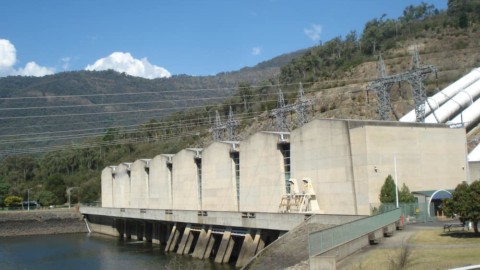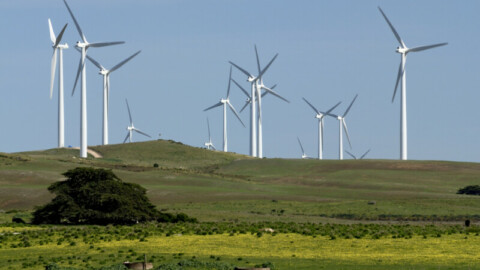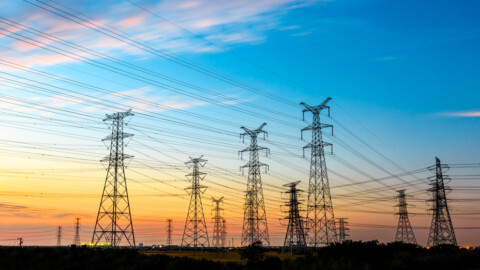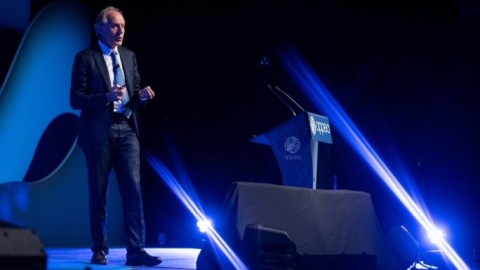By Dr Scott Dwyer, Research Director, Institute for Sustainable Futures, University of Technology Sydney
The electrification of transport is a key weapon in the armoury to decarbonise many a country’s economy, and Australia is no different. With around 20 million vehicles on the road and 99.9 per cent of these powered by petrol or diesel, Australia’s carbon emissions from road transport have been on a seemingly unstoppable rise for decades. A new project funded by the Reliable, Affordable Clean Energy for 2030 Cooperative Research Centre (RACE for 2030) will demonstrate how the strategic integration of electric vehicles (EVs) with the electricity grid and energy storage can accelerate the decarbonisation of Australia’s road transport sector.
EVs, combined with a rapidly decarbonising electricity grid, offer an opportunity to tackle this highly polluting sector head on but also poses numerous challenges. The Reliable, Affordable Clean Energy for 2030 Cooperative Research Centre (RACE for 2030) was established in 2020 and is the largest of its kind.
Its mission is to create transformative and sustainable change in the energy sector by increasing the penetration of renewables and the reliability of the grid while reducing energy costs and carbon emissions. In order to do this, it has secured $68.5 million in Federal Government funding and attracted $280 million from its partners who have been drawn from industry, state governments, and academia.
By 2030, it aims to have delivered $3.8 billion of energy productivity benefits and 20 megatons of carbon emission savings.
Investigating EV and stationary storage integration
One of the RACE for 2030’s keystone projects is the Australian Strategic Electric Vehicle Integration Project (SEVI). Starting this year, SEVI is a three-year, $3.4 million project that is investigating how EVs can be best incorporated along with renewable energy generation and stationary battery storage.
The research project will be undertaking deep dives into promising early EV customer use cases that have been identified as having high potential for replicability and scalability.
These use cases will feature business and government fleets, holiday parks, and residential developments in New South Wales, South Australia, and Western Australia respectively.
From electricity network distribution companies to industry skills bodies, from technology developers to state and territory governments.
The types of organisations who are part of this project is indicative of how the growing adoption of EVs has wide ranging potential benefits for a host of different sectors.
Those who have committed time and funding to the project are Ausgrid, the Australian Power Institute, Endeavour Energy, Planet Ark Power, Powertech Energy, the New South Wales Government, South Australian Government, Selectronic, SA Power Networks, SwitchDin, Plico Energy, Western Power, and the Witchcliffe Ecovillage.
The overall project has been designed and led by industry research specialists from the UTS Institute of Sustainable Futures and the Curtin University Sustainable Policy unit. The other researchers in the team are drawn from Griffith University, Monash University, RMIT University, and the University of South Australia.
Each member of the multi-disciplinary research team has been selected by the research leads, all of whom are experts in the field and have a track record of successfully working together.
As the SEVI project features demonstrations run across the three states, the researchers will be applying a range of methods to understand how EVs can be most effectively integrated alongside solar and stationary batteries in the different use cases.
Social researchers will examine EV user values, motivations, and behaviour when it comes to vehicle use and charging. Power systems researchers will investigate how the charging of EVs impacts on the low voltage distribution grid, especially when combined with solar PV and stationary batteries.
Business and economics researchers will analyse the business models for the different use cases, while energy modelling experts will assess the wider impacts at the national energy system level.
Policy and legal experts will take the findings from all the research outputs and synthesise what this means in terms of recommendations for policy makers concerned with transport decarbonisation and electrification.
Challenges for EV adoption
Australian adoption of EVs is slow compared with other developed economies, with a variety of reasons often cited for why electrifying its road transport faces unique challenges.
Australia is one of the largest countries in the world, sitting between Brazil (over 200 million people) and India (1.4 billion) but with a relatively small population of just over 26 million. This means a low population density and a challenge for the provision of charging infrastructure compared with smaller countries with more people per square kilometre.
Our cities can be dense, and with 85 per cent of the population living in metropolitan areas, this poses other challenges for EV infrastructure provision – such as how to service apartment dwellers or how to balance the needs for reducing congestion on inner city roads.
The Australian grid is also unique as the longest interconnected electricity system in the world at over 5,000km in length and over 40,000km of poles and wires. Getting the electricity from where it is generated to where it is needed has always been a challenge given its enormity.
Effective integration of distributed energy resources, whether solar systems or EVs, is needed to ensure that system security and reliability is maintained or improved, emissions are reduced, and consumer costs minimised.
Australia’s public roads are also similarly vast, amounting to nearly 880,000km which puts it in the top ten of countries with the largest road network in the world. With a relatively small population, many communities could be left traversing charging infrastructure blackspots without suitable strategies and policies to tackle this.
However, alongside these challenges are also some features that makes Australia well suited for EV adoption and gives it good reason to support the move away from fossil fuel powered road vehicles.
Opportunities for EV adoption
Australia has a wealth of the resources that will be critical for the transition to more decentralised, distributed, and decarbonised energy and transport sectors. In terms of the renewable resources that are used to generate electricity, we have some of the best solar and wind resources in the world.
Almost 3.5 million households (over a third) have chosen to have solar installed on their rooftops across Australia to take advantage of this with scope for hundreds of megawatts more. This gives greater impetus to households to want to electrify their vehicles to take advantage of the clean, free electricity their solar systems offer.
However, those solar panels and EV batteries rely on a variety of precious and rare minerals that must be mined but are abundant within Australia’s borders. This includes lithium, where we produce over 50 per cent of the world’s supply, as well as cobalt (20 per cent), aluminium (27 per cent) nickel (23 per cent) and copper (11 per cent). There’s opportunity and advantage to supporting this transition for the country.
Equitable and fair EV adoption pathways
Through these carefully selected practical demonstration projects, SEVI will build on the growing evidence from other EV integration projects nationally and internationally, moving the research beyond early adopters while applying it to the Australian context.
This will seek findings that can help both city and rural EV users, small and large businesses, and solar and non-solar households. Through this approach we can better understand how to take advantage of all the opportunities on offer, while ensuring that EVs can be integrated equitably to benefit all Australians rather than a few.
Featured image: EVs parked up to re-charge at the public chargers installed for the benefit of the Witchcliffe Ecovillage residents. Witchcliffe is one of the three demonstration sites for the SEVI project.


















